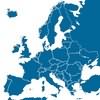Germans, feeling the bite of necessity, have announced another use for their electrified rail network: It can carry green energy, too.
The German rail system has several thousand miles of high-voltage transmission lines that can be modified to broaden the national energy grid. And because of a seismic shift in German policy, the government has to find a quick solution to a daunting problem, namely how to move large amounts of renewable energy from one region to another. Wind turbines spin in the northeast, for example; but cities are growing in the south and west. The German grid would need around 2,240 miles of new high-voltage corridors to make renewable energy viable; about 60 miles have been built so far.
German officials last month said the government was eyeing train lines as a solution. “A close cooperation with Deutsche Bahn relating to the expansion of the power grid is something that I find attractive,” said Rainer Brüderle, the country’s economics minister, told journalists in April.

Michael Scott Moore complements his standing feature in Miller-McCune magazine with frequent posts on the policy challenges and solutions popping up on the other side of the pond.
It might seem obvious to use rail corridors for high-voltage lines. But a remarkable series of events brought Germany to this crossroads, which is unprecedented in the industrialized world.
The meltdowns at the Fukushima Dai-Ichi nuclear plant in March caused a crisis in Chancellor Angela Merkel’s government in Berlin, because Merkel had spent the last two years easing the nation back to the idea of nuclear power. Her argument (until the earthquake and subsequent tsunami hit Japan) was that Germany couldn’t possibly close all its nuclear plants, as planned by a previous government, and shift to other low-emission energies, as demanded by the European Union, all within the next decade.
The EU has agreed to boost renewable energies and slash carbon emissions drastically by 2020. Merkel intended to meet German commitments by letting the country’s nuclear reactors run about 12 years past a rough deadline of 2021 imposed by her predecessor, Gerhard Schröder. It always did sound over-ambitious — running the world’s fourth-largest industrial nation without a single nuclear plant.
And one reason Merkel wanted to keep the reactors live was that building a grid with enough high-voltage capacity for a far greener system would take so long. Germans, like people everywhere, don’t want ugly new technology running through their backyards.
But Fukushima tipped the balance. After the earthquake and tsunami, Merkel flip-flopped with such astonishing speed that critics accused her of pandering for votes. (Germans have a deep grassroots distaste for nuclear power.) But now a report she’s ordered from an ethics commission argues that a safe, nuclear-free German grid is feasible even without importing nuclear energy from the French. And Merkel believes Germany can do it, as long as the “energy transformation” — the Energiewende — is a national effort.
Also on Miller-McCune.com, how the idea of high speed rail died in Texas while thriving in Spain during the 1980s.
Integrating power lines so tightly with the rail system will cost money, of course — but only a quarter of the total estimate for a whole new grid. The work would involve changing the tension on some high-capacity cable or installing whole new lines.
One lesson for the U.S. is that high-speed rail can be used for more than just fast trains. But that’s a trick we would have figured out; some areas run (older) power lines along (slower) rail corridors already.
The more important idea is that a rail system is a national resource, as Henry George pointed out more than a hundred years ago. Keeping it subsidized, efficient, and somewhat under the government’s wing — like Deutsche Bahn, rather than British Rail — can pay off handsomely.
Sign up for the free Miller-McCune.com e-newsletter.
“Like” Miller-McCune on Facebook.
Follow Miller-McCune on Twitter.
Add Miller-McCune.com news to your site.





